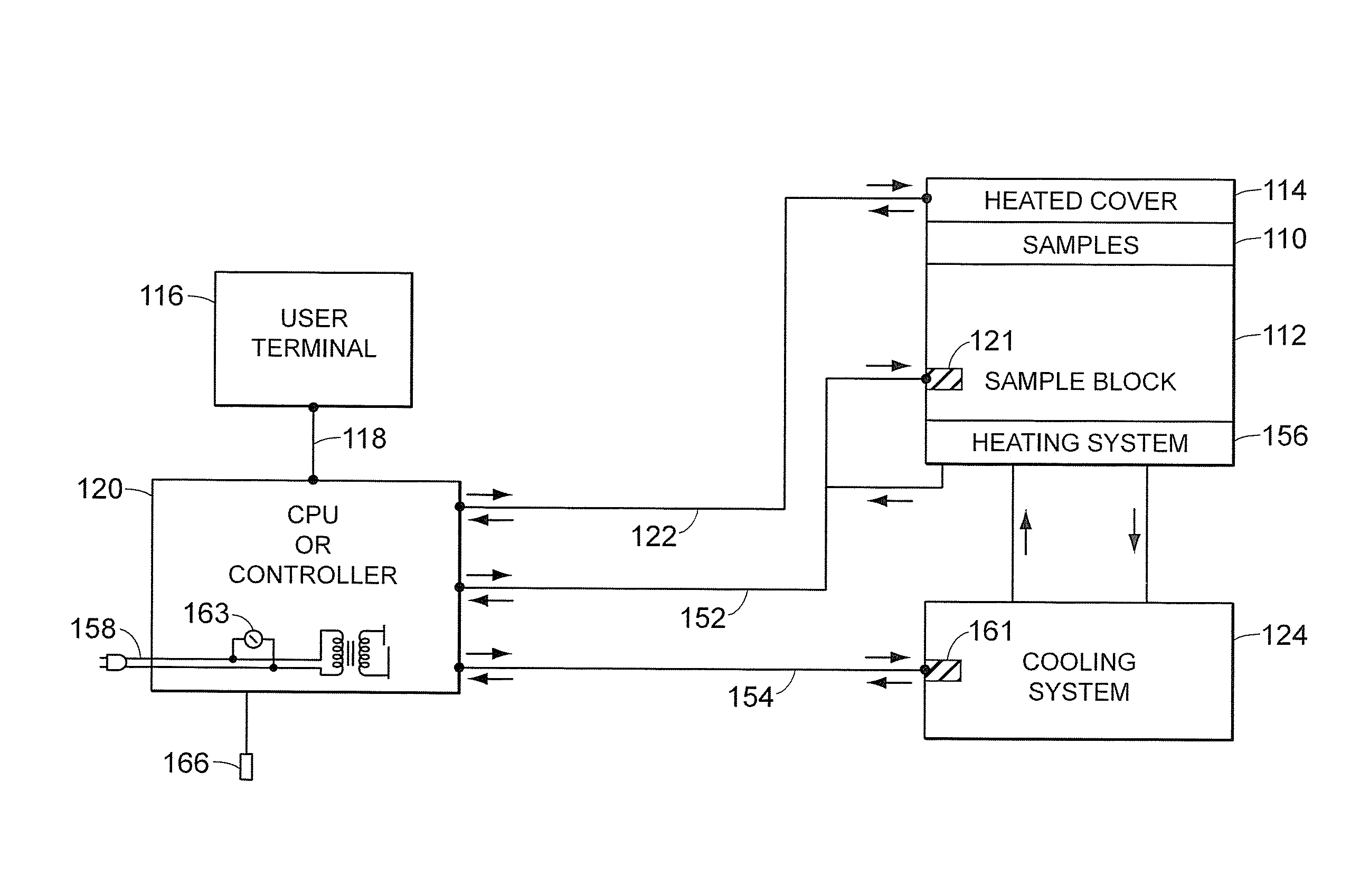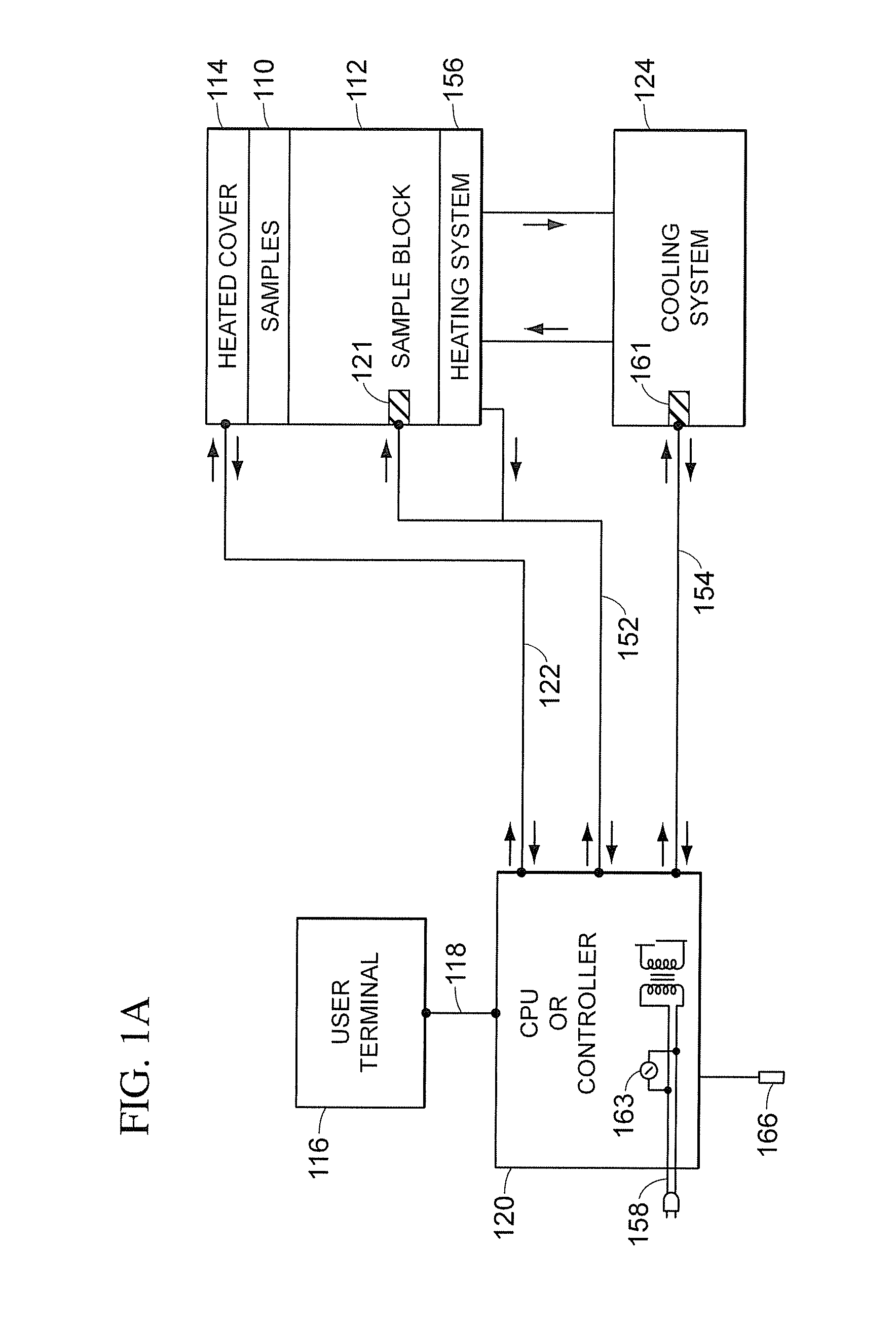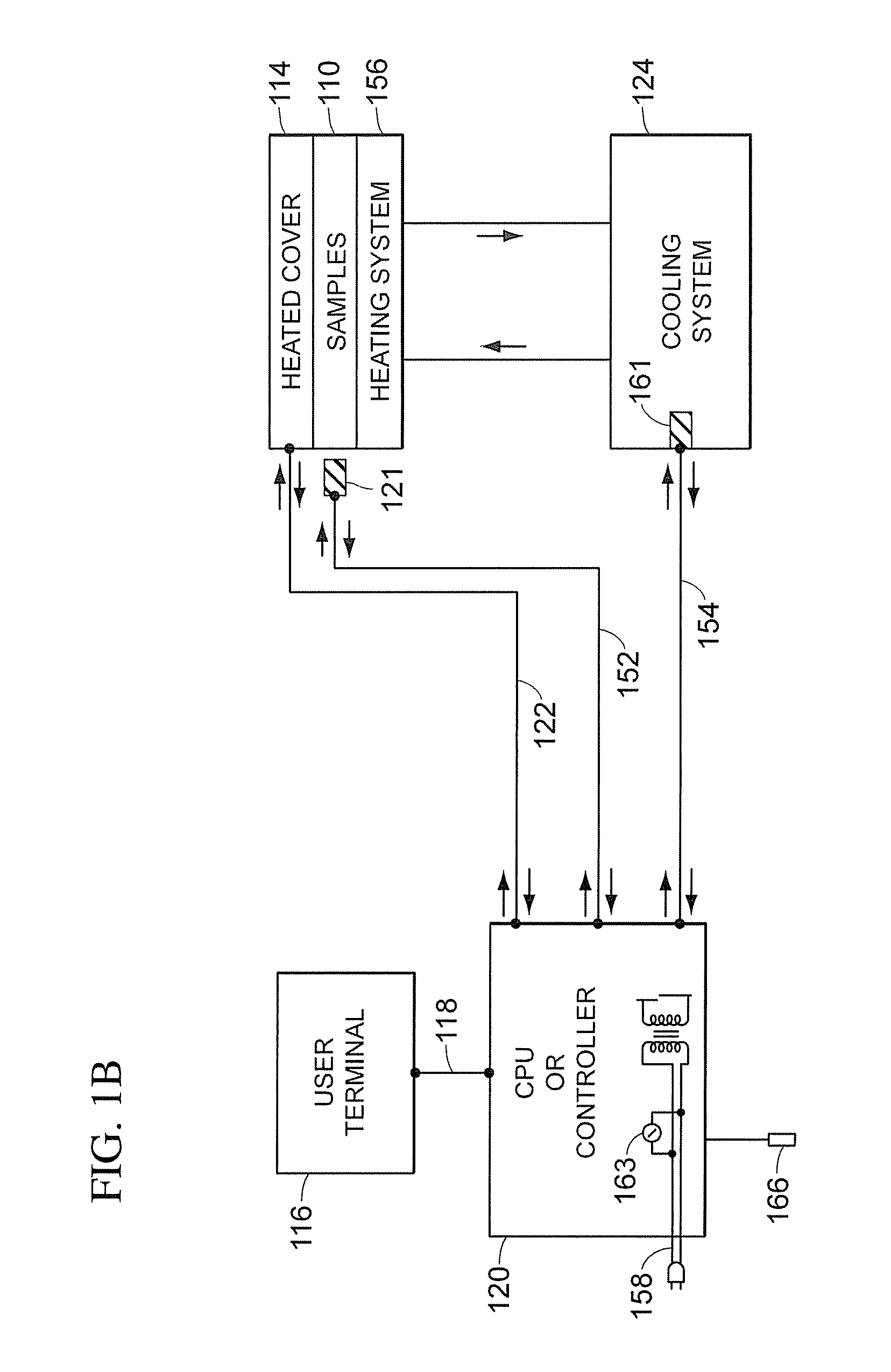Systems and Methods for Cooling in a Thermal Cycler
a technology of thermal cycler and system, applied in the field of instruments, can solve the problems of generating errors in sample temperature, extending the total time needed to complete the amplification, and experiencing the same temperature cycl
- Summary
- Abstract
- Description
- Claims
- Application Information
AI Technical Summary
Benefits of technology
Problems solved by technology
Method used
Image
Examples
Embodiment Construction
[0040] Reference will now be made to various embodiments, examples of which are illustrated in the accompanying drawings. However, these various exemplary embodiments are not intended to limit the disclosure. On the contrary, the disclosure is intended to cover alternatives, modifications, and equivalents.
[0041] With respect to containers, holders, chambers, wells, recesses, tubes, capillaries and / or locations used in conjunction with plates, trays, cards, and / or alone, as used herein, such structures may be “micro” structures, which refers to the structures being configured to hold a small (micro) volume of fluid; e.g., no greater than about 250 μl to about 300 μl. In various embodiments, such structures are configured to hold no more than 100 μl, no more than 75 μl, no more than 50 μl, no more than 25 μl, or no more than 1 μl. In some embodiments, such structures can be configured to hold, for example, about 30 μl.
[0042] Referring to FIGS. 1A and 1B, a block diagram of the major...
PUM
| Property | Measurement | Unit |
|---|---|---|
| temperatures | aaaaa | aaaaa |
| temperatures | aaaaa | aaaaa |
| temperature | aaaaa | aaaaa |
Abstract
Description
Claims
Application Information
 Login to View More
Login to View More - R&D
- Intellectual Property
- Life Sciences
- Materials
- Tech Scout
- Unparalleled Data Quality
- Higher Quality Content
- 60% Fewer Hallucinations
Browse by: Latest US Patents, China's latest patents, Technical Efficacy Thesaurus, Application Domain, Technology Topic, Popular Technical Reports.
© 2025 PatSnap. All rights reserved.Legal|Privacy policy|Modern Slavery Act Transparency Statement|Sitemap|About US| Contact US: help@patsnap.com



